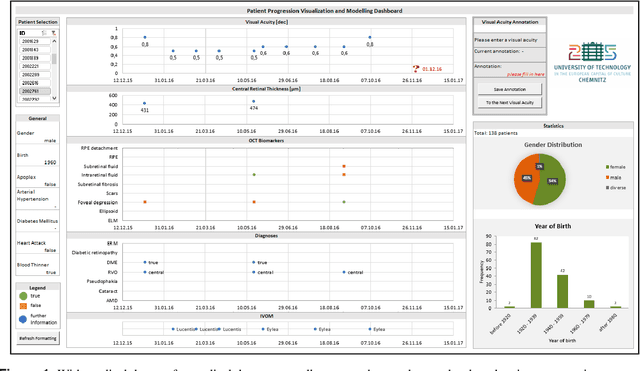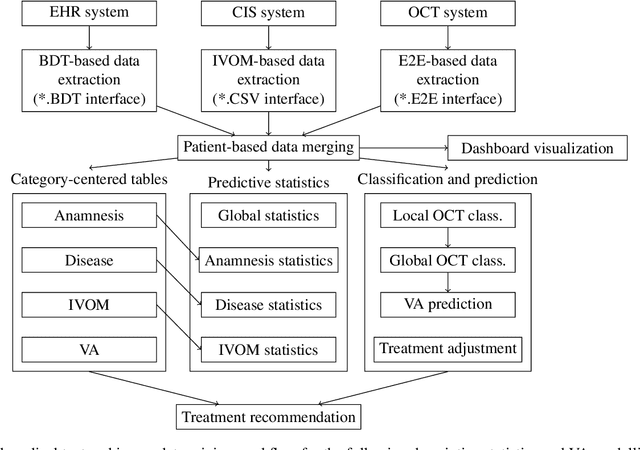Olga Furashova
Visual Acuity Prediction on Real-Life Patient Data Using a Machine Learning Based Multistage System
Apr 25, 2022



Abstract:In ophthalmology, intravitreal operative medication therapy (IVOM) is widespread treatment for diseases such as the age-related macular degeneration (AMD), the diabetic macular edema (DME), as well as the retinal vein occlusion (RVO). However, in real-world settings, patients often suffer from loss of vision on time scales of years despite therapy, whereas the prediction of the visual acuity (VA) and the earliest possible detection of deterioration under real-life conditions is challenging due to heterogeneous and incomplete data. In this contribution, we present a workflow for the development of a research-compatible data corpus fusing different IT systems of the department of ophthalmology of a German maximum care hospital. The extensive data corpus allows predictive statements of the expected progression of a patient and his or her VA in each of the three diseases. Within our proposed multistage system, we classify the VA progression into the three groups of therapy "winners", "stabilizers", and "losers" (WSL scheme). Our OCT biomarker classification using an ensemble of deep neural networks results in a classification accuracy (F1-score) of over 98 %, enabling us to complete incomplete OCT documentations while allowing us to exploit them for a more precise VA modelling process. Our VA prediction requires at least four VA examinations and optionally OCT biomarkers from the same time period to predict the VA progression within a forecasted time frame. While achieving a prediction accuracy of up to 69 % (macro average F1-score) when considering all three WSL-based progression groups, this corresponds to an improvement by 11 % in comparison to our ophthalmic expertise (58 %).
 Add to Chrome
Add to Chrome Add to Firefox
Add to Firefox Add to Edge
Add to Edge